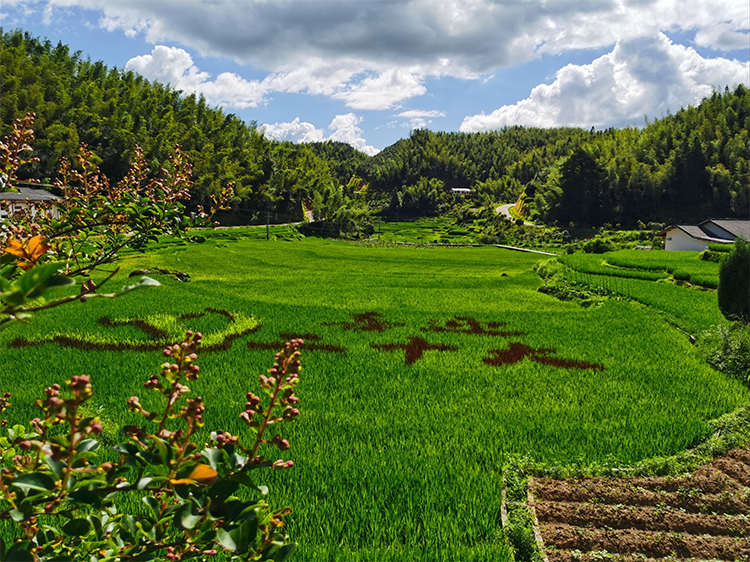Discover Shangbao Rice Terraces: 800 Years of Hakka Culture
Lead-in:
When the first morning light pierces the sea of clouds and spills across layered, scale-like rice paddies, Shangbao wakes. This isn’t a painting, yet it outshines any pigment — perched at 1,260 meters, the terraces are an 800-year-old “fingerprint” carved by Hakka hands. Recognized by the FAO as a Globally Important Agricultural Heritage System, and counted among China’s three major terrace landscapes, Shangbao tells a story of human and nature coexisting with rare poetic grace.
1. A Farming Marvel Across Time
Push aside the bamboo fence of history and you’ll see Southern Song Hakka settlers shaping the mountain with primitive tools. Thirty thousand mu (about 2,000 hectares) of terraces snake along a thousand-meter elevation drop; their hundred-tiered embankments form contour lines that compose one of the world’s most geometric rice-stage theaters. Every stone here carries survival wisdom: bamboo conduit water systems meter spring flow precisely, ox-plow methods survive in daily practice, and even the curve of the ridges follows principles of soil and water conservation. The 2018 FAO recognition honored not just scenery but an epic of human adaptation.
2. A Visual Feast on the Four-Season Palette
April turns the terraces into a light magician: flooded paddies become millions of tiny mirrors reflecting dawn and cloud seas into flowing star rivers. In July, waves of bright-green seedlings ripple like silk under mountain breezes. By October, heavy golden panicles transform the slopes into a huge harvest painting; and when winter snow falls, the terraces’ black-and-white lines shift into an ink-and-wash scroll. Photographers’ secret: the dreamiest “fairyland moments” come on clear mornings after rain, when mist winds through the terraces.
3. The Living Museum of Hakka Codes
Follow a straw-hatted farmer into the mud and you’ll read another language of the terraces. In spring, water-buffalo hooves and Hakka mountain songs echo in the valleys; at autumn’s threshing festivals, winnowing dances and bamboo-pole dances keep millennial rhythms alive. Taste bamboo-tube rice scented with fir, touch rammed-earth walls around earthen Hakka houses — the worn stone steps bear the patina of generations who prized both farming and learning. The local ecology is ingenious: frogs control pests, ducks act as “weeders,” and wildflowers along ridges serve as natural repellents. Thirty-nine rare medicinal herbs await discovery along the paths.

4. Practical Guide: Be a Terrace Owner for a Day
• Transportation: Drive two hours from Ganzhou Huangjin Airport to Chongyi County; the final 18 km of mountain road is best by private car (about 200 yuan per vehicle). Adventurous travelers can try the rustic township minibuses for authentic local flavor.
• Hiking routes: The highlight Nanliu–Lianghe line (3 hours) shows the cloud-sea terraces; experienced trekkers can tackle a 5-hour loop to encounter an old oil-press and century-old yews.
• Where to stay: Hakka homestays in the terrace core (150–300 yuan/night) often open directly onto starry skies and rice-wave vistas.
• Local flavors: Don’t miss bamboo-tube rice and ricefish, aimi rice cakes (mugwort pastries), and the locally brewed “Jiucengpi” rice liquor made from terrace red rice. In autumn you can join glutinous-rice pounding (ci ba) festivities.
5. Smart Tips to Avoid the Crowds
While beautiful year-round, late April–May planting and September–October harvest draw the most visitors. For solitude, try June’s rainy season for mist spectacles or early clear days after snow in January. Download the ShiHua (“Identify Flowers”) app to unlock the trail’s 39 rare herbs.

Conclusion:
As globalization levels many traditional villages, Shangbao remains stubbornly dense with time. No filters are needed — sunlight in old farmers’ wrinkles, bamboo frogs hopping the ridges, and the ever-flowing bamboo spring tell an Eastern tale of persistence and wisdom. Slip this landscape postcard into your itinerary: it will add a layer of living heritage to your China journey.


